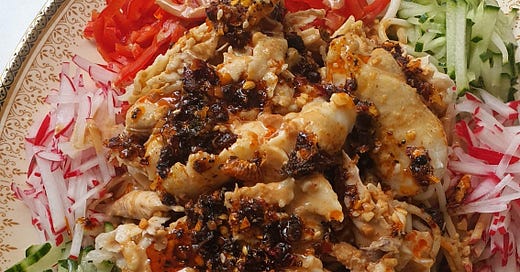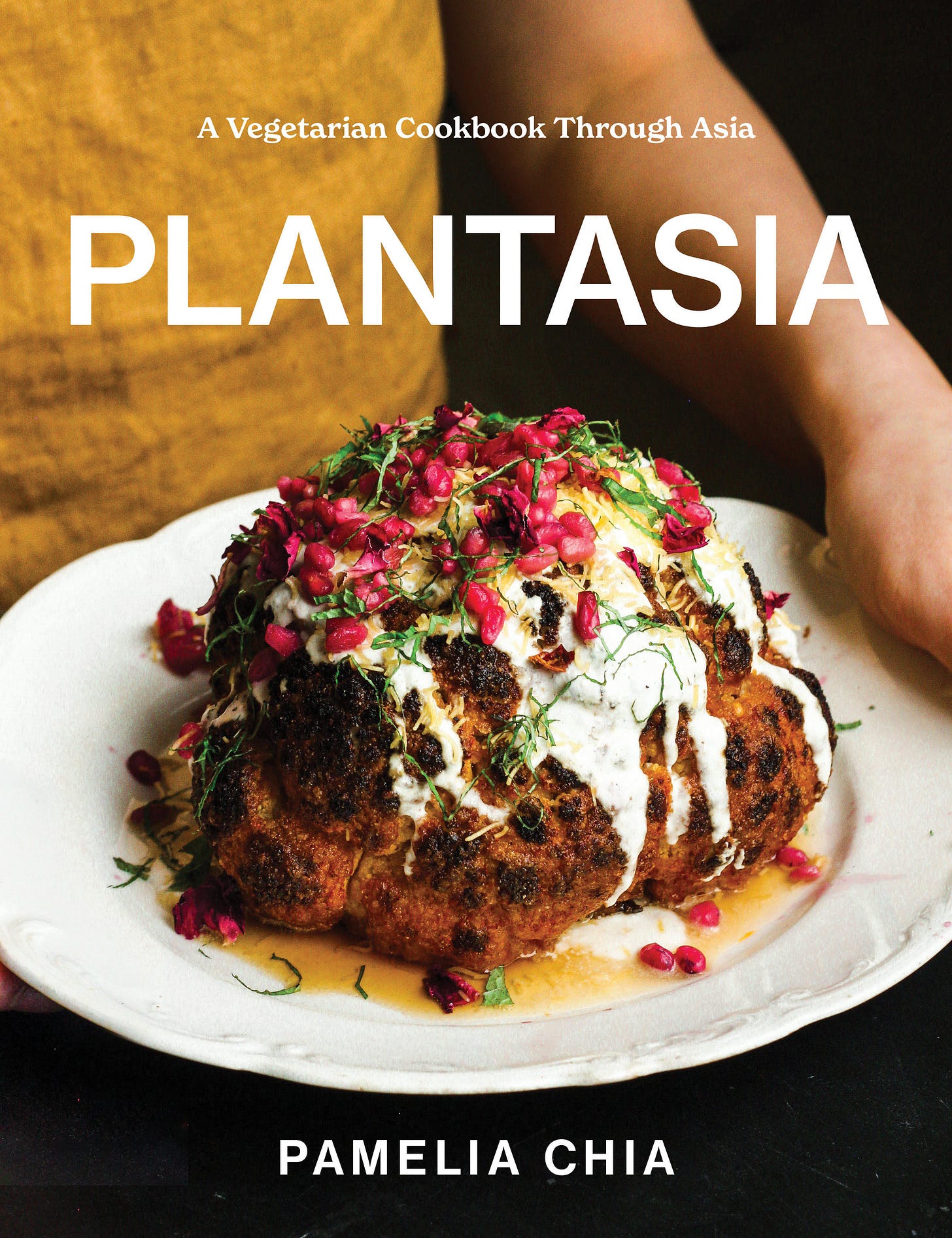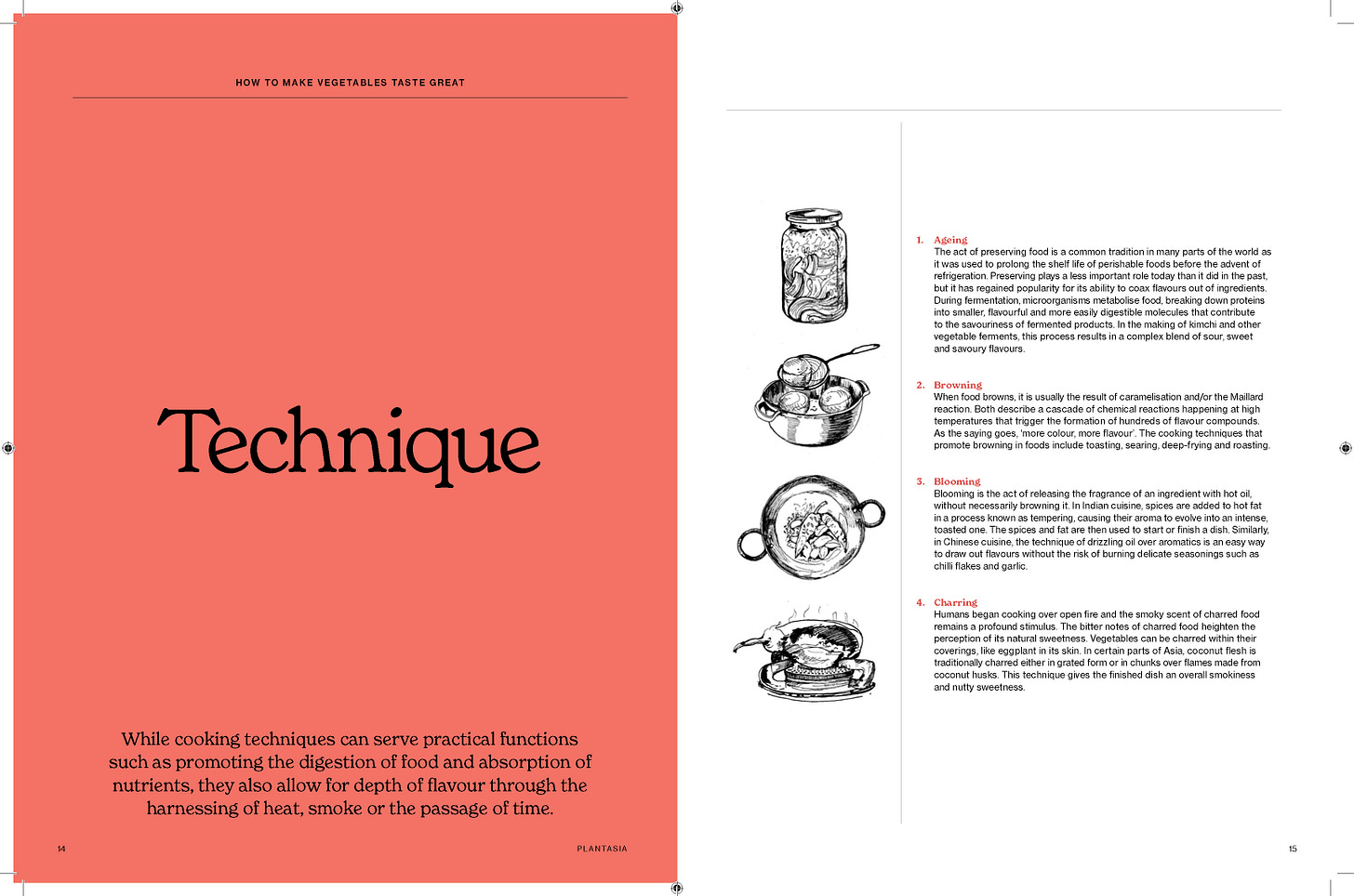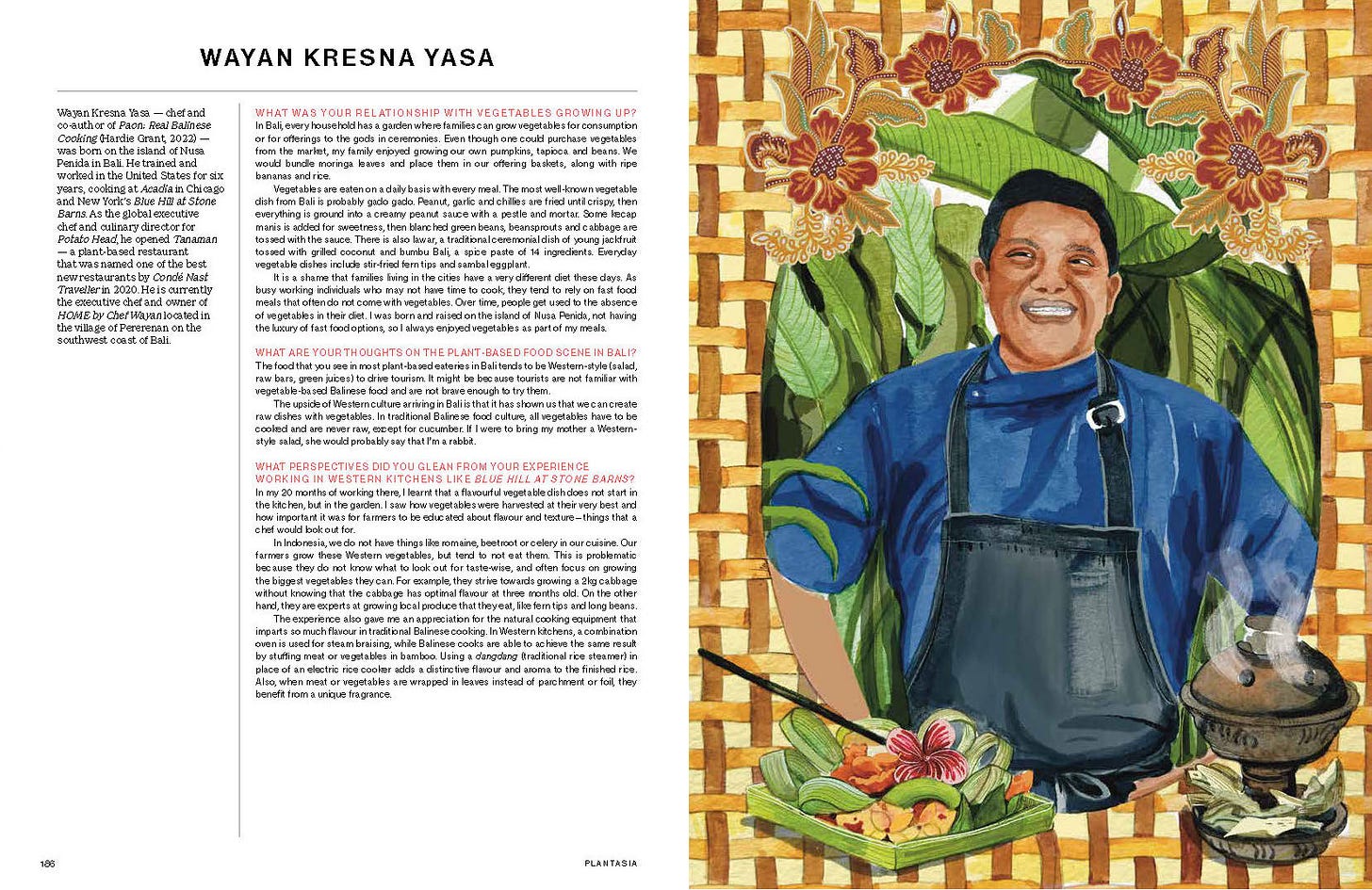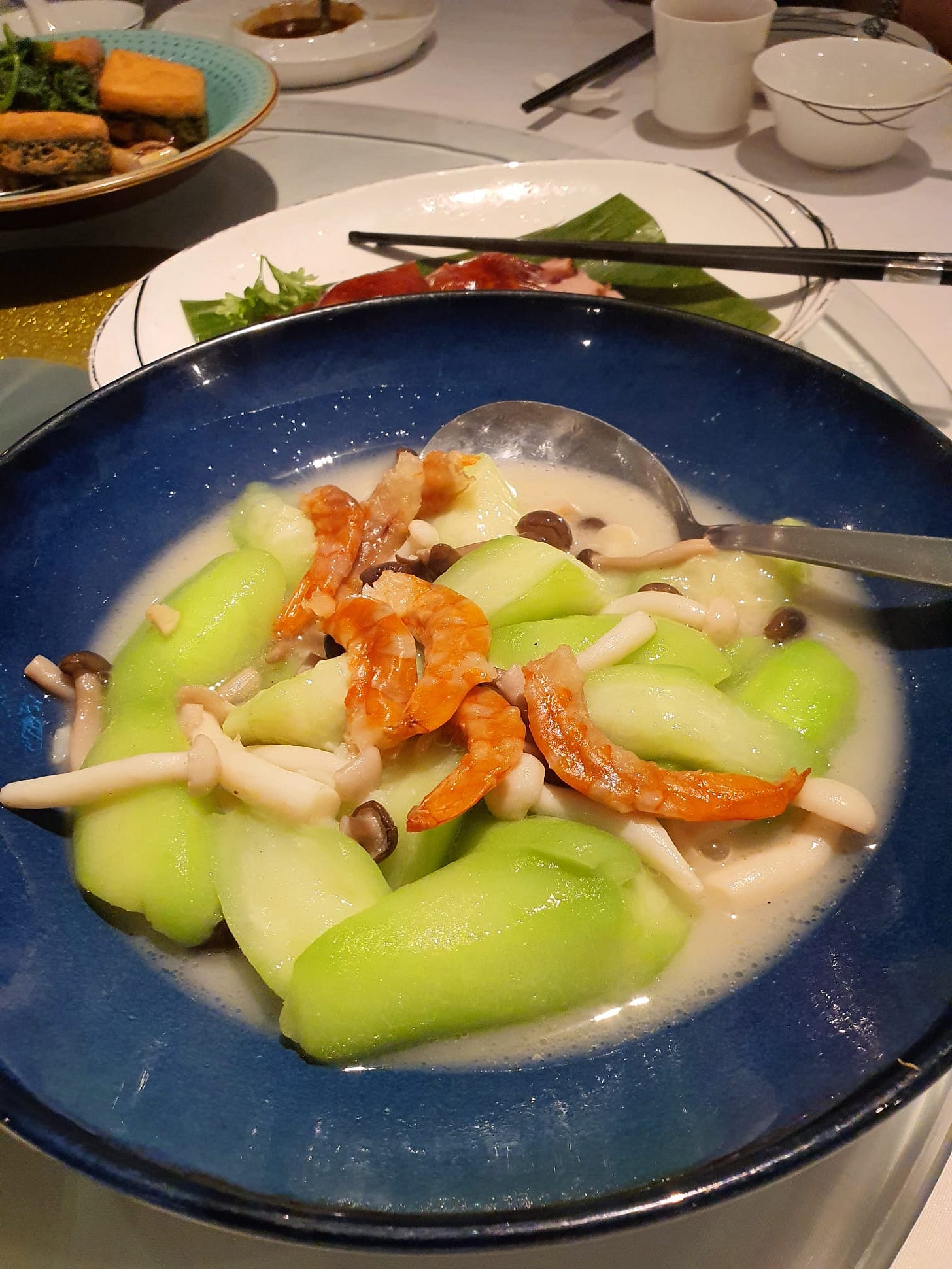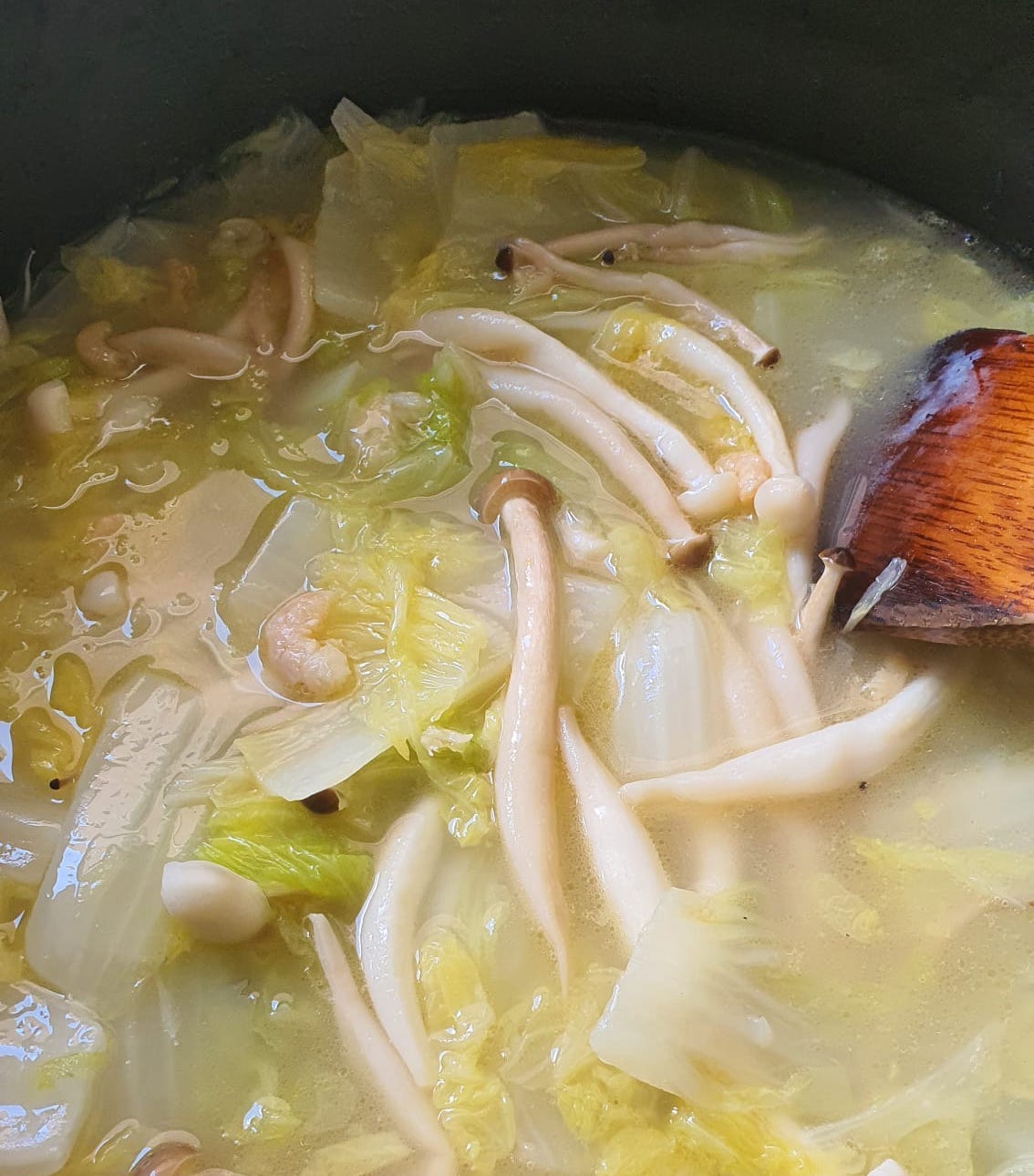A vegetable-centric meal for spring 🌱
Braised wombok in chicken broth and peanut butter noodle salad.
Today’s newsletter is a PLANTASIA SPECIAL! Last October, I put my second cookbook ‘PLANTASIA: A Vegetarian Cookbook Through Asia’ out into the world and now it is 6 months old! To everyone who has purchased my book, gifted it to others, attended a book event, spread the word, or took time out of your day to send me lovely words, thank you so much! To celebrate, I’m sharing two recipes on today’s newsletter that are not vegetarian but very much vegetable-forward. They are so simple that I make them regularly at home. But first, I’d like to share about Plantasia with those who are new here ✨
What’s the mission of the book?
Many who hear about the book assume that I’m vegetarian or vegan. I’m neither. I love my meat, seafood, and dairy, but simply felt that there had to be a vegetable cookbook out there written for those who, like myself, grew up eating Asian foods and will not be satisfied eating salads, grain bowls, yogurt dips, or hummus all the time. I realised how pertinent the work was, especially since our culture has become so meat-heavy. It’s not uncommon for vegetables to be absent in meals, for a child to only enjoy eating potato in the entire vegetable kingdom, or to hear someone openly declare that they don’t eat vegetables. My mission is not to convert anyone to full-time or part-time vegetarianism or veganism; I simply want to provide you with tasty options so that we can all reintroduce balance into our meals, a traditional tenet of many Asian cuisines.
What’s inside the book?
Across 288 photographed and watercoloured pages, you will journey through recipes from different parts of Asia, including Vietnam, Thailand, the Philippines, Japan, Korea, and more. The book begins with an exploration of four elements - Flavour, Aromatics, Techniques, and Texture. Master these and any vegetable that you cook will be delicious. Interspersed throughout the recipes are interviews with chefs and food writers who impart techniques, philosophies, and tips that you can apply in the kitchen.
What are the recipes in the book like?
The book has recipes that range from easy weeknight dishes to time-consuming ones that require dedication. Many require a visit to your Asian grocer or supermarket if you live outside of Asia, for ingredients such as tempeh or jarred fermented tofu. Each recipe draws inspiration from Asia, but you will not find veganised versions of traditional meat or seafood dishes such as laksa or pho. The recipes also do not use faux meats, only all-natural ingredients!
If I had to sum it up, Plantasia is for anyone who would like to celebrate vegetables for what they are, and learn to amplify them through time-honoured culinary techniques and flavour combinations from Asia.
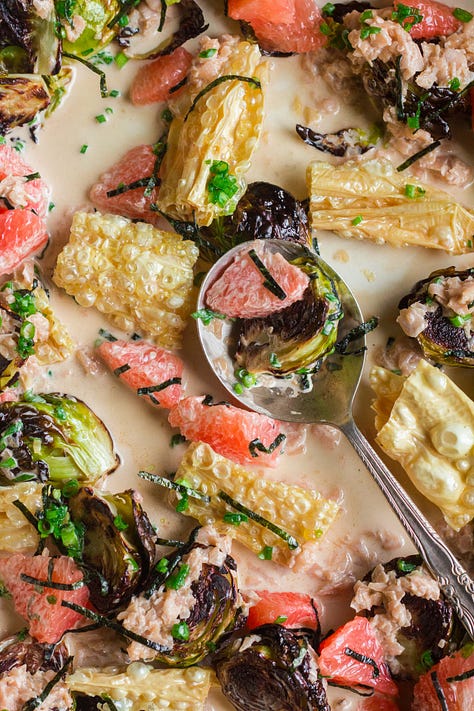
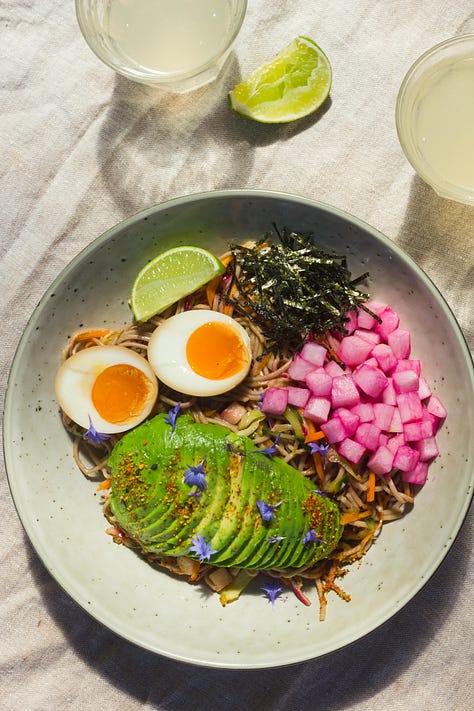
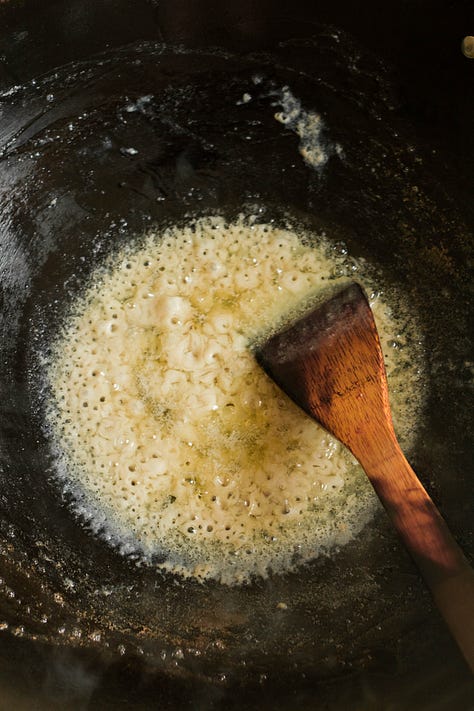
How do I purchase Plantasia?
Plantasia is available at bookstores in Singapore, Malaysia, the US, Hong Kong, France, Germany, Australia, and the Netherlands! Otherwise, you can order it directly from my website, where hardcover and digital copies are available 🧡
It is an exhilarating feeling whenever I’m at a restaurant and the vegetable dish trumps everything else that’s on the table, because that’s hard to do. On holiday in Singapore once, my in-laws’ took us to Alvin Leung’s Forbidden Duck. While the restaurant was known for its roasted duck, what left a deeper impression was the Chinese gourd braised with dried shrimp in chicken broth. Of course, the combination of tender gourd and dried shrimp is nothing new - with the addition of glass noodles, it is an everyday dish in Singaporean kitchens - but this tasted like an amped up version with the milky chicken broth.
In a previous newsletter about milky fish broth, I wrote about how the milkiness of a broth is attributed to the emulsification of fat + liquid, in the presence of gelatine / collagen. While chicken tend not to have quite as much of that lip-smacking quality compared to fish frames that I used, chicken wings do pretty well. I rubbed the chicken all over with coarse salt, rinsed, then drained them. This is something that I learnt from my mom, but I’ve heard of other moms using ginger, turmeric powder, or tamarind. Whatever you use to marinate or exfoliate the chicken with, the rationale is the same: to remove impurities, gaminess, off-odours, and excess blood so that the flavours in your stock sing clearer.
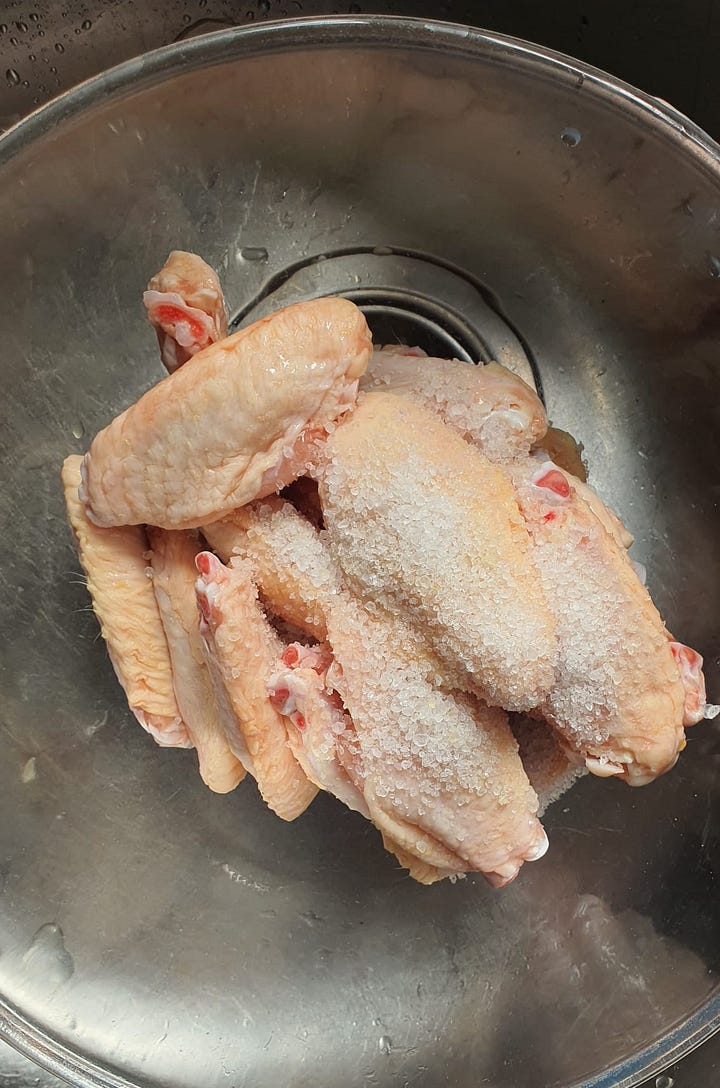
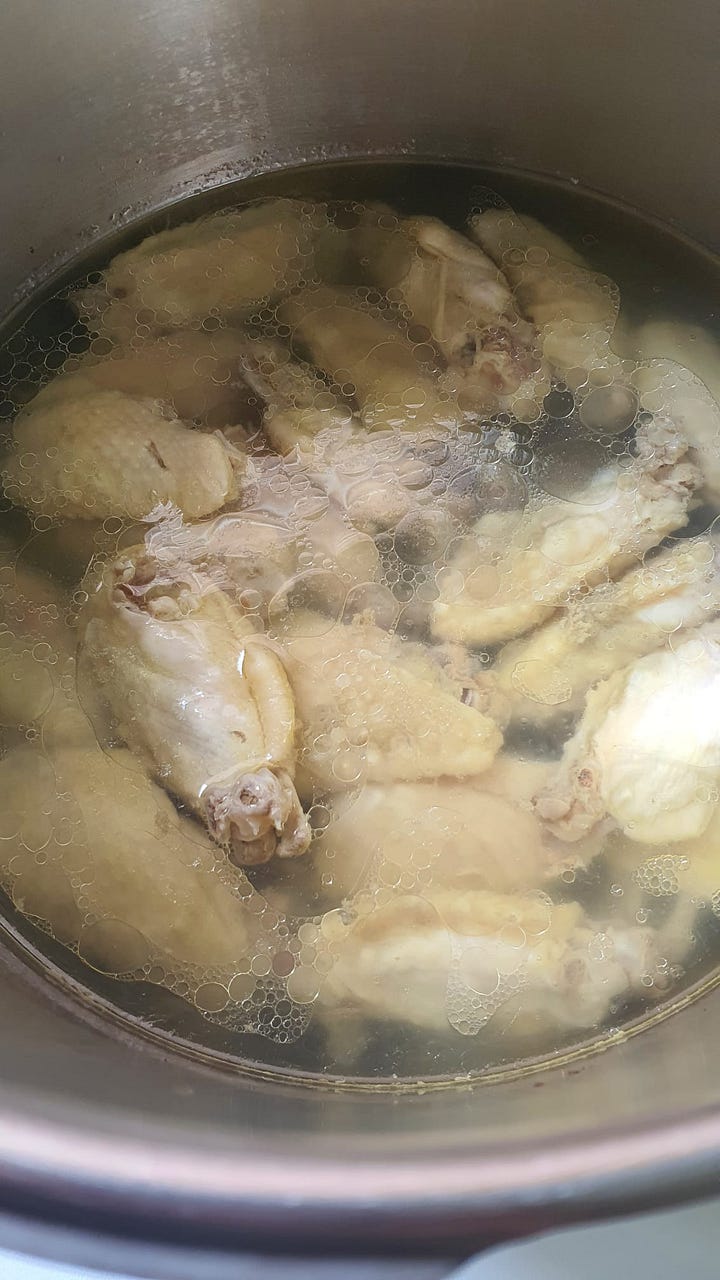
A small amount of dried shrimp is fried in oil before the stock and wombok go into the pot. This step not only releases the fragrance of the dried shrimp, but also boosts the fat content of the broth. When I interviewed Cameron Stauch, author of Vegetarian Viêt Nam, for Plantasia, he told me about how he observed Vietnamese cooks shallow-frying tofu skin before adding it to soups. “It’s important to make sure there is some fat in the dish, especially if it’s a soup, stew, or simmered dish. Fat is flavour. I think too many vegetarian and vegan cooks leave this element out and this makes the dish taste a little one-dimensional.”
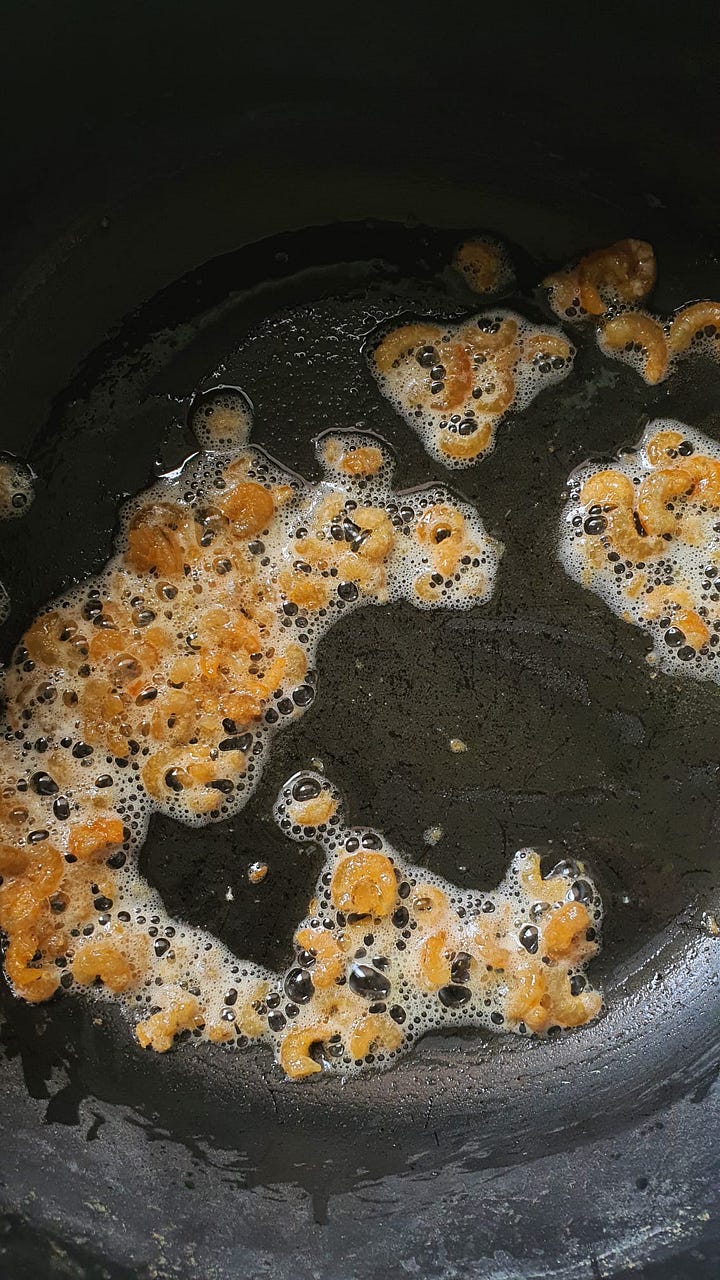
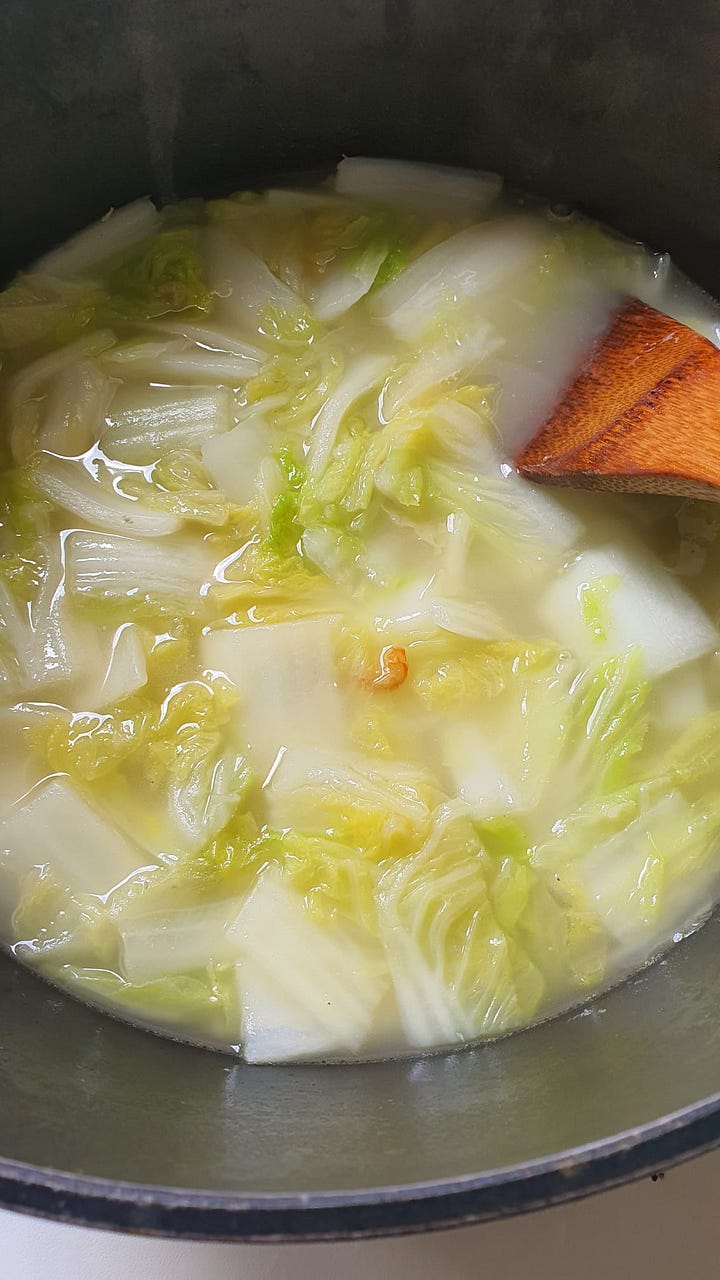
To finish the dish, a little cornstarch to lightly thicken the broth. This goes a long way in creating an illusion of richness, and coats the tongue in a way that collagenous cuts of meat do. I like pairing this dish with a cold noodle salad tossed with peanut butter dressing, which is not only cold and refreshing, but also makes use of some of the chicken leftover from preparing the stock. (You could make it entirely vego if you wish.) People ask me all the time what is the one ingredient I’d recommend having in their pantry and I always tell them peanut butter, because it is endlessly versatile. This dressing is inspired by Chinese sesame dressings, but made with peanut butter instead and seasoned with the barest touch of kicap manis. It is delightfully fresh, and a great way to use any spring produce that you might encounter at the markets 🩷
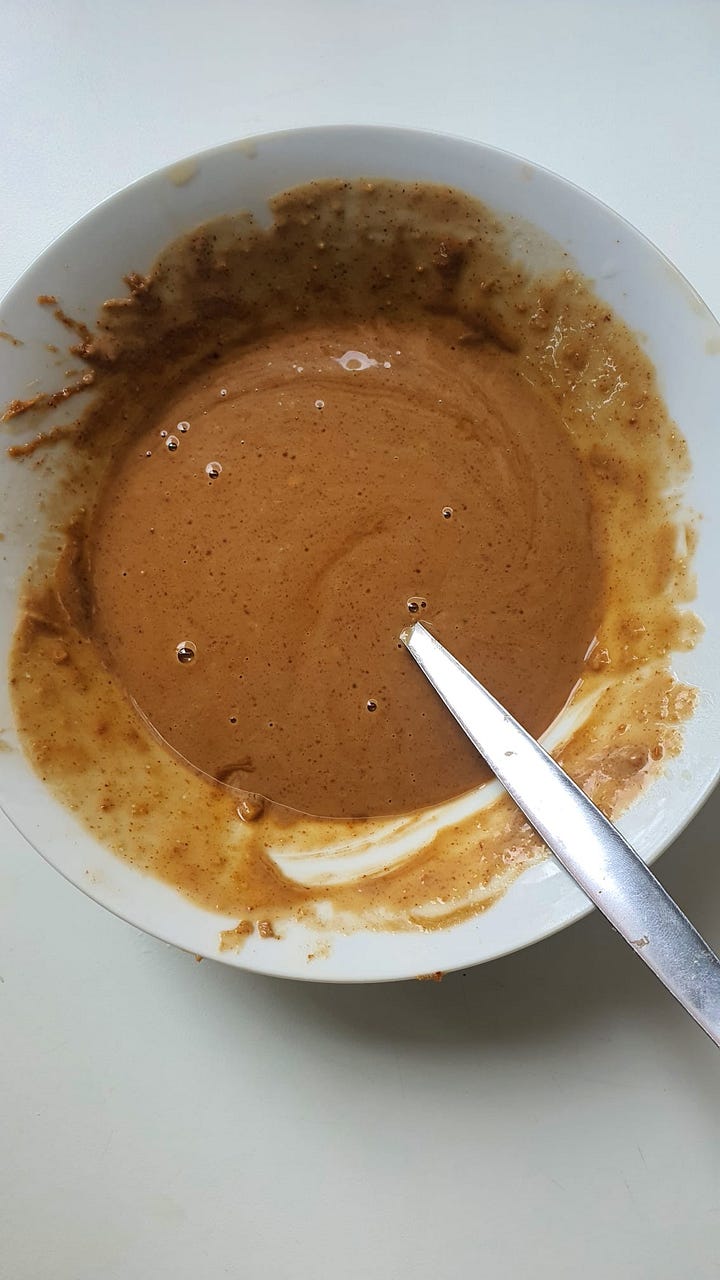

Braised Wombok and Mushrooms in Chicken Broth
MAKES 2 TO 3 SERVINGS
2 pounds (900 g) chicken wings
A handful of coarse salt
4 cups (1 litre) water
1 ounce (30 g) dried shrimp
1 1/2 tablespoons oil
1 pound (450 g) wombok (Chinese cabbage), cut into 2-inch (5-cm) pieces
1 teaspoon salt
3 1/2 ounces (100 g) assorted Asian mushrooms, such as shimeiji
2 tablespoons cornstarch
Combine 900 g chicken wings and a handful of coarse salt in a large bowl. Rub the salt into the chicken thoroughly, then rinse in running water. Drain in a colander and place the chicken in a pressure-cooker or medium pot.
Boil 1 litre water in a kettle and pour this over the chicken. (My mom swears that this makes a difference in the flavour of the resulting soup and I’ve been doing it ever since - mainly because it speeds things up.) Bring everything to a boil over high heat. Cover and pressure-cook for 30 minutes or simmer for 1 hour, or until the chicken is tender enough to come off the bones easily. You will only require 3 cups (720 ml) of chicken stock for this recipe - save the rest of the stock and the cooked chicken wings for other dishes, such as the noodle salad below.
Combine 1 ounce (30 g) dried shrimp and 1 1/2 tablespoons oil in a wide pot and set over medium heat. Stir-fry until the shrimp begins to foam and smell fragrant.
Add the chicken stock, 1 pound (450 g) wombok (cut into 2-inch / 5-cm pieces), and 1 teaspoon salt. Cook over high heat, covered, until the wombok collapses and the stems begin to lose their translucence, about 5 minutes. Add 3 1/2 ounces (100 g) assorted Asian mushrooms and continue cooking for 2 additional minutes, or until the mushrooms are cooked through.
Meanwhile, place 2 tablespoons cornstarch in a small bowl and pour over just enough water to cover. Stir until dissolved and pour the slurry into the pot. Bring everything to a boil and simmer for 1 minute. Turn off the heat and add more salt if desired.
Peanut Butter Noodle Salad
MAKES 2 TO 3 SERVINGS

